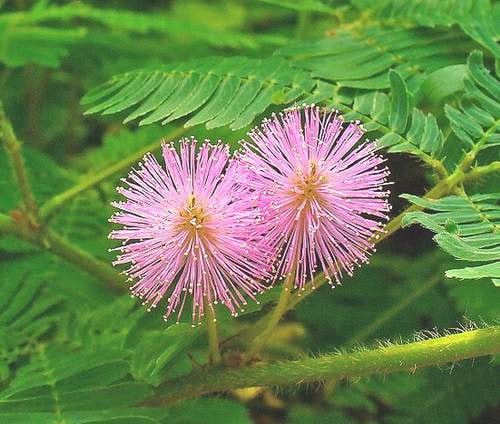Mimosa pudica cures bone and joint pain
Mimosa pudica L. is a member of the Mimosa family, also known as shy grass, shy plant, sensitive plant is the name of a traditional medicine called Ham Tu Thao, a small plant that grows into large bushes. The most recognizable feature of the plant is that the leaves will droop down when touched, hence the name above.
Mimosa pudica L. is a member of the Mimosa family, also known as shy grass, shy plant, sensitive plant is the name of a traditional medicine called Ham Tu Thao, a small plant that grows into large bushes. The most recognizable feature of the plant is that the leaves will droop down when touched, hence the name above.
The medicinal parts of Mimosa pudica are the roots and leaves. The roots are dug up year-round, sliced, and dried in the sun or oven. The leaves are harvested in the summer and used fresh or dried.
The medicinal herb has a sweet, slightly astringent taste, slightly cold properties, has sedative, anti-inflammatory, pain-relieving, blood pressure-lowering, anti-inflammatory, diuretic effects, and is used in the following cases:
The roots are used in medicine.
Treating rheumatism, back pain, aching bones and joints, numb limbs: thinly sliced mimosa root, soaked in wine, roasted until fragrant (20-30g), boiled with 400ml of water until 100ml remains, drink twice a day. If there is a lot of medicinal herbs, you can cook them into a liquid extract, then mix with wine for later use. Use alone or combine with other medicinal herbs according to the following formula:
Mimosa pudica.
Recipe 1: Mimosa root, pomelo root, and feverfew root, each 20g; Polyscias fruticosa root and licorice root, each 10g. Boil and drink during the day, can be soaked in wine.
Recipe 2: Mimosa root, whole climbing mahogany plant (tam phung) each 20g; Scratch grass root 15g; lemongrass root 10g. Roast all until golden brown, decoct and drink one dose per day.
Recipe 3: Mimosa root, large-leaf chili stem, frog foam stem, and Curculigo orchioides root, each 10g; white copper root, yellow dodder fruit, each 8g. Cook all with 2 times of water, then reduce to a liquid extract. Drink 2 times a day.
Lesson 4: 10g of mimosa root; 3g each of watercress leaves, sea spinach, passionflower, grass root, and piper lolot leaves. Steep in boiling water or make a decoction to drink.
Lesson 5: 12g each of chasteberry root, hy thiem, thorny plant, devil's claw vine, thousand-year-old herb, smilax glabra, dipsacus root, gắm vine, and ke huyet vine. Boil to drink or soak in wine to drink.
Cure vaginal discharge: crush fresh mimosa root, squeeze to get the juice, sweeten and drink 3 times a day. 2 tablespoons each time for a week.
Branches and leaves are used in medicine.
Treats nervous breakdown, nervousness, insomnia, restlessness: 15g of Mimosa pudica leaves and branches, wash, cut short, fry until golden brown, decoct to drink. Use alone or in combination with 15g of purple flower buds, 30g of yellow flower tamarind, 10g of passionflower, ophiopogon japonicus, and cassia seed each. Decoct to drink.
Cure high blood pressure: Mimosa branches and leaves, Thuja orientalis leaves, Plumeria flowers, Uncaria rhynchophylla, Eucommia ulmoides leaves, Cassia tora seeds (roasted), White crane stems and leaves, each 8g, Red Polygonum multiflorum, Tang ki sinh, each 6g, Earthworm 4g. Boil and drink during the day. Can be ground into powder, sifted, mixed with starch to make pills, drink 20-30g per day.
Note: According to traditional medicine, chasteberry bark has anesthetic and sedative effects in high doses. Pregnant women should not use it.
According to SKDS-MD






